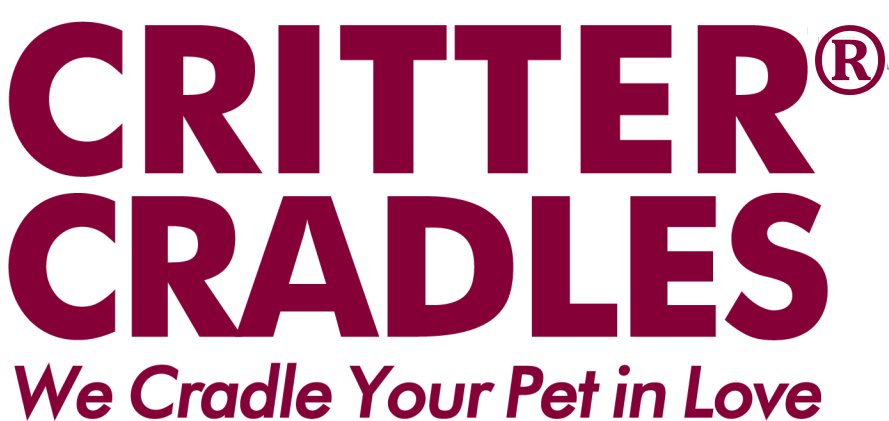Critter Cradle™ CC-PRONE Instructions
Each kit includes a set of foaming agents, base, V-tech pieces and a special blue polyform bag.

Designed for use with furry patients
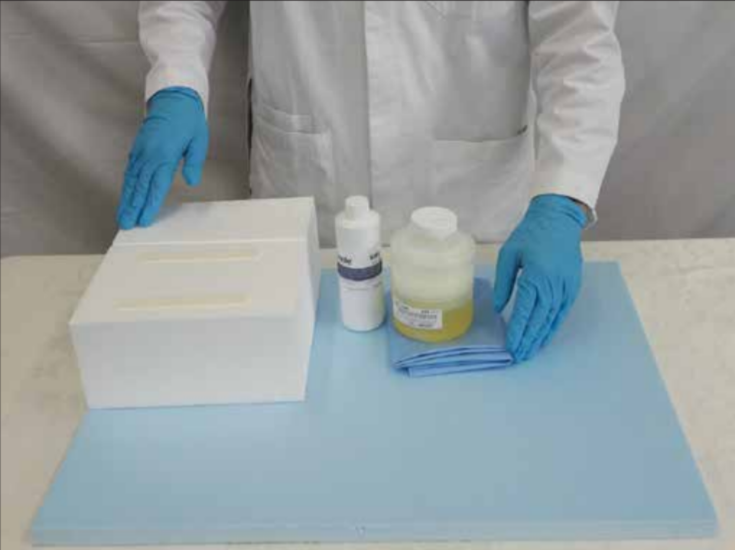
Safety First!
Always practice safety for your patients and staff. Wear protective gloves, smock and eye protection.
Remove jewelry before making forms. Always follow directions!
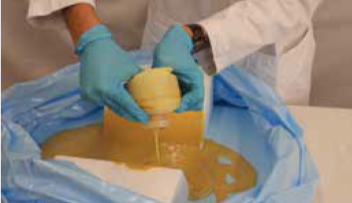
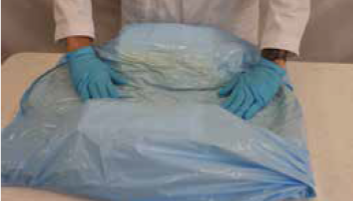
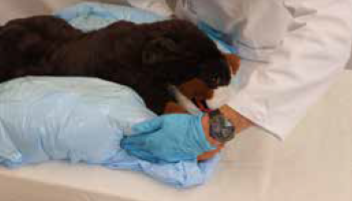

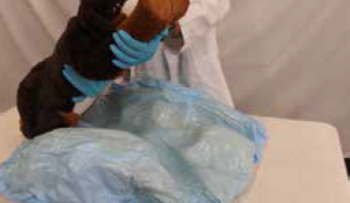
CRITTER CRADLE™ BRAND CC-PRONE HELPFUL HINTS
STRENGTHENING FORMS: After pouring the foam around the edges of the form and placing the form deep into the bag, remove as much air as you can before folding the excess bag underneath the form. Allow the foam to start to rise above the form, then push down, keeping the foam level with the form, forcing it tightly against the patient.
CREATING TIGHT, SECURE FORMS: Do not let the patient move. Keep constant pressure on the patient’s anatomy that rises out of the foam, applying gentle yet firm pressure.
The form is useless unless you make a deep impression of the patient in the desired set-up position. Sometimes this may mean putting pressure on top of the patient’s shoulders, keeping them deep in the form, allowing the foam to rise to the top of the form.
Foam that rises above the white form is useless foam. It is foam that can be diverted to another area where more foam may be needed or it can be used to make a tight fitting mold by pressing it down and holding it down for several minutes, until the form begins to cool.
CURING EACH MOLD: It is critical that the patient does not move for a full 15 minutes to allow the form to harden properly. As the form hardens, you can feel it cool to room temperature within 15 minutes from the starting point (depending upon temperature and atmospheric conditions in the room). Do not allow the patient to get up until the cradle is cool (room temperature) to the touch. If the area underneath the patient is still warm, allow it to cool and harden properly before use. This will result in a secure, comfortable tool to quickly reposition your patient each time they come in for treatment.
